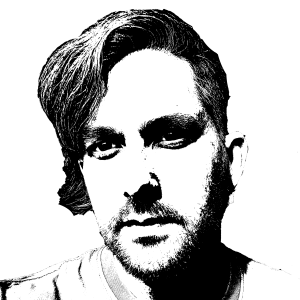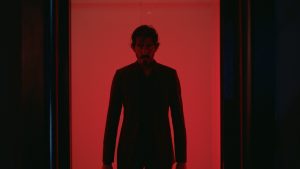Coming off Moonrise Kingdom – one of his best-reviewed and most popular films – director Wes Anderson has scored another hit with The Grand Budapest Hotel, a WWII-era film set in a fictional Central European nation (which might as well be the Czech Republic) that employs all the usual Anderson tropes and wit and visual style but also throws in a wartime intrigue storyline worthy of Hitchcock.
For anyone still complaining that the director keeps making the same movie over and over, here’s one that’s certainly… different.
At the Prague premiere of The Grand Budapest Hotel last month, attended by Anderson and stars Jeff Goldblum, Saorise Ronan, and Tony Revolori (who were on loan from the Berlinale, where the film had just had its world premiere), the director took the stage to introduce the film, and told the audience that the fictional city of Lutz was a fill-in for Prague.
Interestingly, he didn’t mention the film’s stronger connections to the Czech Republic: the titular hotel is an unmistakable dead-ringer for the Hotel Bristol in Karlovy Vary, and the Czech spa town seems to be directly referenced in other details surrounding the hotel, including the observation tower and that deer overlooking the city that features prominently on the film’s poster. Check out the side-by-side comparison in this Swide article.
But it’s not the Czech Republic: it’s the Republic of Zubrowka, a fictional European nation that is about to be invaded on the eve of WWII – or another, similar war. Anderson has a great deal of fun playing with history, with the Nazi SS becoming the ZZ – the Zig Zag Division, a more playful threat but still one quite unlike anything the director has attempted before.
But I’m getting ahead of myself. The Grand Budapest Hotel opens in the present day, as a young girl visits the grave of an unnamed but beloved author. Flash back to 1985, and the author, played by Tom Wilkinson, begins to tell his story; which flashes back to 1962, when the author – now played by Jude Law – sits down to meet with Zero Moustafa (F. Murray Abraham). Who tells his story, set at the titular Hotel, in 1932.
This Russian nesting doll of a narrative device – the story-within-a-story-within-a-story – may seem like whimsy at first, but it’s an especially poignant comment on memory and storytelling: on our interpretation of past events, of memories based on memories. To many of us, 1930s Czechoslovakia may well be fictionalized Zubrowka, with our individual perception based on art and culture and history passed down through the generations.
Back to the film: The Grand Budapest Hotel finally settles down in 1932, as a young Zero (wonderfully portrayed by Tony Revolori, in his first starring role) starts to work at the hotel as a lobby boy under the tutelage of dedicated concierge Gustave (Ralph Fiennes, who’s just rat-a-tat terrific here as the film’s central character).
Gustave’s dedication leads to a relationship with an older woman, Madame D. (played by an unrecognizable Tilda Swinton, buried under old-age makeup), which gets him into trouble when she leaves him a valuable painting in her will; Adrien Brody (as Madame D.’s son) and Willem Dafoe (as his right-hand man) are perfectly cast as the villains who apply pressure to Gustave and the executor of the estate (played by Jeff Goldblum, who’s also… no, I’ll stop with the superlatives. The whole cast is great.)
And that’s where the intrigue and Hitchcockian suspense come into play: as ZZ forces swoop in to take control of Zubrowka, and even the Grand Hotel, Zero and Gustave are led on a quest that takes them to prison (Harvey Keitel helps Gustave break out a la Escape from Alcatraz) up a cable car (echoes of Night Train to Munich) and down the slopes (in a skiing sequence that I might claim echo a Bond film if it weren’t so uniquely assembled and even stop-motion animated).
The Grand Budapest Hotel also features Bill Murray (in a playful hotelier-pact sequence that echoes the film’s nesting doll narrative structure), Saorise Ronan (as Zero’s love interest), Léa Seydoux and Mathieu Amalric as key figures in the byzantine plot, and Anderson regulars Owen Wilson and Jason Schwartzman in bit parts.
Cinematography by Anderson standby Robert D. Yeoman beautifully captures the director’s trademark picture-perfect compositions; this time around, they have a lot of fun with color and tone in the period-era fantastical setting. The evocative original score is by Alexandre Desplat, his second home run in as many months following The Monuments Men.
I’m an unabashed lover of almost every Anderson movie (only The Life Aquatic failed to completely win me over), but like Moonrise Kingdom, The Grand Budapest Hotel represents the director breaking out into new territory with almost universal acclaim; it’s still early, but the film is sure to be remembered by the end of the year.
Watch closely during the climactic hotel shootout sequence for a blink-and-you’ll-miss-it cameo from George Clooney (or a lookalike, though Clooney would have been around during that time filming The Monuments Men).
Like The Darjeeling Limited, The Grand Budapest Hotel was preceded by a terrific short film at the premiere: Castello Cavalcanti, starring Jason Schwartzmann as a racer who crashes in a sleepy Italian village. It may not show at regular screenings, but you can catch it on YouTube here.
















5 Responses